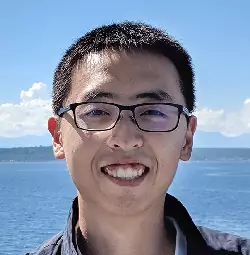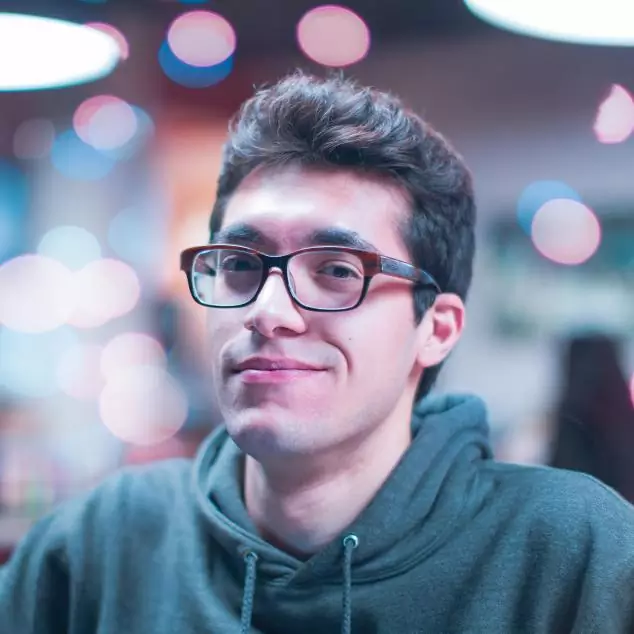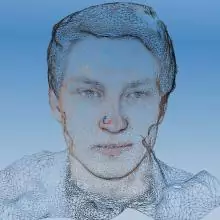AI in Art, Music and Expressionism
Embracing Liminality: Music, Art, and Expression in the Age of Artificial Intelligence

Image credit: Tanbir Mahmud/Unslash
Overview
- AI algorithms like DeepArt and DeepDream pioneered and ushered in new artistic possibilities, blurring the lines between human and machine creativity.
- Now, modern image and video-generation models like DALLE 2, Stable Diffusion, Midjourney, Imagen, Imagen-Video, etc. are defying reality.
- Generative algorithms transform music composition, raising concerns about copyright infringement and loss of authenticity.
- AI-driven art platforms and music services have the potential to profoundly impact the global economy and redefine creativity. It also sparks debate about authenticity, ownership, and collaboration between humans and machines in the music industry.
- AI-generated content challenges traditional copyright concepts, necessitating a clear legal framework to protect intellectual property rights.
- AI-generated art raises questions about creativity, authorship, and the essence of art itself as it becomes more sophisticated.
- Technologies like Glaze and World ID aim to address challenges posed by AI-generated art, ensuring the protection of creators’ rights in the digital era.
In an era of transformation, the art world finds itself in a liminal space, a threshold where old norms crumble, and new ones are yet to form. The rise of artificial intelligence (AI) is changing how we produce and consume art and music and we’ve seen an unprecedented blurring of the lines between human and machine creativity. This convergence sparks important debates about authorship, authenticity, and the true essence of art. Moreover, it triggers a crucial discussion on intellectual property rights in the era of AI-generated art.
Artificial intelligence’s growing role in art creation brings to light two significant matters: safeguarding human artistic expression and the legal methods we employ to protect it. This article seeks to explore these two interconnected themes, examining how the evolution of AI art impacts artistic expression and necessitates a reimagining of copyright laws.
A review of an ever growing rush of AI Art
AI Brushes the Canvas: The Dawn of a New Artistic Era

The canvas of modern AI artistry began in late 2015 with DeepArt, an algorithm that transformed photos into the style of famous artists, blurring the lines between human and machine creativity. In the very same year, Google’s DeepDream generated surreal, dreamlike images, showing AI as a catalyst for original creation, not just replication. This combined with an increasingly complex set of tools for creating digital art and an astonishing rush towards generative AI, paved the path to what very few people imagined: Originality within Artificiality, now Artificial Intelligence was able to create original art.

Over the course of 2022 and particularly into 2023, a slew of technologically advanced models such as Midjourney, DALL-E, Stability AI, and many others have been at the forefront of an AI art revolution. These models are the embodiment of an artistic evolution, showcasing AI’s capability to produce dazzling visuals that skillfully mirror or merge various artistic styles. Leveraging intricate machine learning algorithms, they decipher text descriptions and meticulously transmute them into images, thereby empowering artists with cutting-edge tools for creative expression. This has fueled the exploration of unprecedented artistic dimensions, leading to the establishment of the world’s first AI art gallery in the culturally rich city of Amsterdam.
This burgeoning art movement signifies a transformative shift in our perceptions of art and expression. It raises thought-provoking questions regarding the nature of creativity, authorship, and the use of AI in the creation process. Consider this intriguing analogy: Is there a similarity between an artist painting Johannes Vermeer’s iconic “Girl with a Pearl Earring,” and an AI program being instructed to recreate the same masterpiece? This is not merely a question of duplicating art, but rather an inquiry into the depth and essence of creative expression. Can we regard the AI-generated work as a distinct form of expression, and does the attribution of authorship extend to the AI model that executed the task? These are the profound considerations we’re left to ponder as we witness the dawn of this new era in art and technology.

Pivotal Moments: AI’s Artistic Triumphs and Global Impact
AI has been crawling in our lives for ages. Notable moments include the sale of the first AI-generated artwork, “Portrait of Edmond Belamy,” for $432,500 at Christie’s auction house. In 2022, the global generative AI market accounted for USD 10.6 billion. Between 2023 and 2032, this market is estimated to register the highest CAGR of 31.4%. It is expected to reach USD 151.9 billion by 2032 according to a market.us report.

Artificial Intelligence (AI) is increasingly redefining the landscape of the art world, offering a new paradigm for creation and interpretation. It’s fascinating how the brushstrokes of yesteryears have now given way to ‘keystrokes’ in the digital realm. Indeed, AI-generated art has become a global phenomenon, with artists and algorithms collaborating to produce compelling works. This powerful evolution has been compared to shifting from playing an ancient lyre to a Stradivarius violin in just a few short years, as AI tools have rapidly advanced.
Notable artists like Jon Rafman and Mario Klingemann are pioneering in this space, pushing the boundaries between human influence and machine creation. Klingemann’s project, Botto, exemplifies the blending of human and AI creativity, where a community of human stewards curate the output of an AI “artist”.
Interestingly, the rise of AI image generators such as Dall-E and Midjourney has brought about a dynamic shift. Imagine feeding a description like “Arab man drinking coffee in the style of Van Gogh” into an AI, and watching it draw a faithful depiction in under a minute! Jason Allen, who used Midjourney to win a digital art prize, aptly remarks, “Instead of brushstrokes, it’s keystrokes”.

However, the surge of AI in art is not without controversy. Questions about originality, creativity, and copyright are emerging, especially with algorithms trained to replicate existing artworks. Where does one draw the line between inspiration and duplication? As AI continues to burgeon, these debates will undoubtedly intensify.
So, as we journey into this new era of AI artistry, it’s clear that the canvas of creation is expanding, opening up a myriad of possibilities and challenges alike. One thing is for sure, AI has become an artist, and the world is its atelier. The influence of AI on the global economy has shown potential to be profound and to possibly evaluate to billions through AI-driven art platforms, music streaming services, and virtual reality experiences. Right now creators and artists are evoking their concerns rightfully so.
AI in Music: New Creative Frontiers

The Music of Machines: A New Concerto in Creation
A youtuber recreated Kanye West’s voice and the real-time voiceover recording was indistinguishable from the real deal. This is just an example of how Artificial Intelligence is reaching into the very heart of creation, embracing the realm of music. The fusion of generative algorithms with music composition has started to create ripples in the music industry, fundamentally transforming the way we perceive and create music. Early pioneers in the field, like Amper Music, allowed users to fashion unique tracks within minutes, while OpenAI’s MuseNet leveraged machine learning to generate original compositions, spanning a diverse array of genres and styles. These advancements were just the prelude to an even more captivating ongoing symphony of innovation.

Using AI to mimic Kanye West in real time
A notable example of the current wave of developments is Google’s MusicLM. As showcased in their publicly available demo, MusicLM brilliantly demonstrates AI’s prowess in understanding and generating music, offering an intriguing glimpse into the future of AI-composed melodies. However, along with the excitement that this technological innovation brings, it also raises serious concerns. As AI begins to generate music that is practically indistinguishable from human-produced compositions, debates around copyright infringement and loss of authenticity are gaining traction. While some artists see AI as an empowering tool that enhances their creative process, others view it as a threat to the authenticity and originality of human-created music. These disparate views underpin the ongoing discourse on the role of AI in music, forming a symphony of innovation and controversy.
AI has shown great potential in creating music that resonates with audiences. A noteworthy example is an AI-generated song that mimics the styles of Drake and The Weeknd. The song gained significant attention before Drake’s record label asked streaming companies to remove this song from streaming services, sparking a debate on the role of AI in the music industry and the potential for a new era of collaboration between human artists and machines.
Another example is the AI-generated Oasis album, which caused a stir and even received a response from Liam Gallagher. The vocalist acknowledged the AI’s ability to imitate the band’s sound and expressed openness towards incorporating such technology into future projects. Similarly, Grimes has a rather different take. She welcomed collaborations with AI and encouraged her fans to deepfake her as long as she gets 50% royalties on any AI-generated song that uses her voice. She declared that she is interested in “killing copyright,” which would probably undermine her ability to collect royalties in the first place.
These instances are a clear indication of how AI is pushing the boundaries of creativity in music, raising questions about authenticity, ownership, and the future of human and machine collaboration in the art form. And most importantly, the audience is loving AI generated music. Deepfakes of Drake, Kanye, Rihanna, The Weeknd and more have accumulated millions of views. Some are arguing that we’re liking AI generated music even more than the original, and this seems to be the real concern. Spotify and streaming services might need to add a new label very soon, “AI Generated”, and share royalty fees to creators if regulated so.
The Legal Implications of AI
Copyright Claims
Currently, a chief area of concern pertains to AI-generated content, which has been the center of numerous discussions due to allegations of copyright infringement related to tracks that simulate the voices of various artists. The existing legal framework that governs copyright law and AI is nebulous at best. As it stands, current legislation may not be adequately equipped to handle the complexities of deepfakes and their profound implications on intellectual property rights.

A perfect illustration of this predicament is the recent case involving voice actors who found AI-generated replicas of their voice and unique speech patterns. These artists found themselves in an unprecedented situation, where they had to navigate the protection of their intellectual property rights when their distinctive vocal tones were duplicated by AI technology. This isn’t merely a question of copying someone’s work; the technology can generate entirely new content that nonetheless seems ‘authored’ by the individual it mimics. This leads to profound ethical and legal questions about authorship, ownership, and rights over one’s personal characteristics when they’re used in this way.
The advent of AI-generated content thus calls for a broader and deeper conversation around copyright law. It poses questions like: Does mimicking a singer’s unique style constitute copyright infringement, even if the song produced is entirely new? Should a voice actor have copyright over his or her unique voice modulation? And most importantly, how can we update copyright laws to effectively address these novel challenges?
The issue becomes even more complicated when we consider the potential for abuse of AI-generated content. For instance, a malicious actor could use AI to create harmful or misleading content, such as fake speeches or endorsements. This could infringe on the rights of the individuals involved and have wide-ranging consequences, from personal harm to political destabilization.
In a rapidly evolving digital landscape, it is crucial that our legal framework evolves too, to protect individuals and their intellectual property rights in the face of advanced technology like generative AI and AI-generated content. This matter is not just for lawmakers and legal experts alone; technologists, ethicists, and society as a whole must engage in this critical conversation.
Deepfakes
The rising ubiquity of deepfakes—which entail not only the alteration of existing media but also the creation of entirely new content through AI—poses a threat to various sectors such as politics, entertainment, and more. This technology involves the use of a person’s likeness to give the impression that they’ve said or done something they have not. The combination of deepfakes and generative voices could emerge as a potent and potentially harmful force without suitable regulatory measures. Instances like the perceived deepfakes of Elon Musk’s statements in a recent Tesla autopilot fatality court case underscore the complexity of the situation. The question of how and to what extent this should be regulated remains unanswered, currently leaving room for legislative interpretation.

At a recent White House gathering of AI CEOs, Vice President Kamala Harris highlighted the moral obligation of companies to develop safe AI products. She emphasized that “The private sector has an ethical, moral, and legal responsibility to ensure the safety and security of their products, and every company must comply with existing laws to protect the American people.”
Various members of Congress, including Senate Majority Leader Chuck Schumer, are working on drafting or proposing legislation to regulate AI. Meanwhile, in the European Union, lawmakers are navigating the specifics of the recently adopted AI Act, the world’s first comprehensive law to regulate AI. The EU AI Act aims to ensure that AI systems used within the Union are safe, transparent, traceable, non-discriminatory, and environmentally friendly. Depending on the risk level of an AI system, different obligations for providers and users have been established.
High-risk AI systems, such as those affecting safety or fundamental rights, will undergo assessment before entering the market and throughout their lifecycle. Generative AI, like deepfakes, will need to comply with transparency requirements, including disclosing that the content was generated by AI, designing the model to prevent it from generating illegal content, and publishing summaries of copyrighted data used for training. On 14 June 2023, MEPs adopted Parliaments negotiating position on the AI Act. The talks will now begin with EU countries in the Council on the final form of the law.
The EU AI Act could potentially transform regulations and copyright norms, imposing more stringent transparency requirements, mandating disclosure of AI-generated content, and necessitating a systematic summary of copyrighted data used for training, thus shaping a more accountable and responsible AI landscape.
Meanwhile, in China, authorities have recently mandated that AI systems strictly adhere to censorship rules. The AI legislative landscape is evolving rapidly around the world, and all technology stakeholders must remain vigilant and compliant to foster responsible and beneficial AI deployment.
The Ongoing Debate: Embracing AI or Preserving Artistic Authenticity?
The emergence of AI-generated art has sparked a heated debate within the artistic community. Some argue that AI can enhance the creative process by offering new tools and techniques for artists to explore, while others believe that embracing AI-generated works could undermine the value and authenticity of human-created art.
Advocates of AI-generated art assert that it is an engine for creativity and a catalyst for pushing the horizons of artistic disciplines to unprecedented levels. They posit that just as traditional tools like the paintbrush or the piano opened up new vistas for artistic exploration, AI introduces a new canvas of possibilities. It can assist in creating complex patterns, inventing novel artistic styles, or generating innovative ideas that might not naturally occur to the human mind. The interplay between human creativity and AI can, therefore, lead to a synergy that propels art into new, unexplored territories. In this perspective, AI isn’t replacing the artist but instead serves as an extended arm of the artist, broadening their creative capabilities.
However, this newfound frontier of creativity isn’t without its detractors. Critics question whether AI-generated art can truly match the emotional richness and personal connection that are hallmarks of human-created art. The process of art-making often involves conveying personal experiences, emotions, or perspectives, which critics argue can’t be replicated by AI. Some rtists are infuriated about AI and the potential for AI to dilute the very essence of art – the human touch. Artists voice fears that delegating the creative process to AI might lead to an erosion of individuality and originality. The risk, they argue, is that AI could turn art into a sterile, mechanized process, devoid of the emotional depth and unique interpretive lens that characterize the human artistic experience. Thus, while AI may possess the capability to mimic artistic styles or generate innovative patterns, critics argue it lacks the capacity to infuse creations with the emotional resonance and nuanced insights that make art profoundly human.
Protecting Art & Music in the AI Age: Glaze and World ID
World ID: A Privacy-First Approach to Digital Identity
To address concerns about ownership and copyright in the age of AI-generated art and music, the World Intellectual Property Organization (WIPO) discussed possible regulatory policies and worldcoin, backed by Sam Altman, is actively building World ID, a protocol to bring global proof of personhood to the internet. This initiative aims to provide a secure, global identification and registration system for all forms of intellectual property, including AI-generated creations. WIPO argues that given enough computing power, soon we may not be able to distinguish between human-generated and machine-generated content and that there might be no determining factor to establishing copyright ownership anymore.
World ID offers a digital passport that allows users to prove they are unique and real persons while remaining anonymous. The privacy-first, self-custodial, and decentralized system can be used to authenticate into web, mobile, and decentralized applications, and privately share personhood verifications such as phone numbers or biometrics. Whether this is something that can be embedded in digital art and propagated effectively on the internet is yet to be assessed.
Glaze: A Tool to Protect Artists’ Styles
Glaze is the product of a collaboration between the university’s SAND Lab and several professional artists. It works by applying barely noticeable changes to an artist’s original artwork, creating a “style cloak” that prevents AI models from copying the artist’s style. When AI models are trained on these “cloaked” artworks, they fail to learn the artist’s original style and instead produce images in a different or hybrid style.
Though Glaze is not a permanent solution, the team continually updates the tool to improve its robustness. It serves as a necessary first step towards developing artist-centric protection tools while legal and regulatory efforts take shape.

These are just a few attempts to build new technologies which aim to address the challenges posed by AI-generated art and provide a foundation for a fair and equitable creative landscape in the digital age. We are not investing enough to build similar solutions to define and protect copyright along all forms of artistic expression, because artistic expression seems to be something generative AI can really quickly excel at.
As the debate over the role of AI in art continues, it will be crucial for artists, policymakers, and technologists to work together to establish a framework that supports creativity and protects the rights of creators in this rapidly evolving landscape. The liminal space we find ourselves in offers a unique opportunity to redefine our understanding of art, music, and human expression. As we stand at the precipice of a new creative frontier, we must ask ourselves some fundamental questions: What does it mean to be truly creative? Can we ascribe artistic value to the output of machines, or is creativity a uniquely human trait? And in a world where the line between human and machine becomes increasingly blurred, can we ever truly trust what we see and hear?
In the end, as we embrace the unknown, we might wonder if our own reality is an elaborate symphony of algorithms, as our own minds generate the art and music of our existence. Are we merely players in an infinitely complex AI-driven world, composing our thoughts and actions on a cosmic canvas? And if so, who is the true author of our lives?







